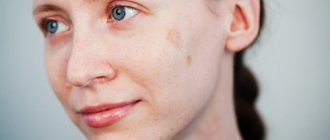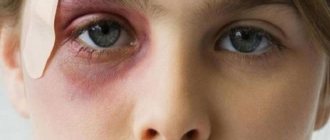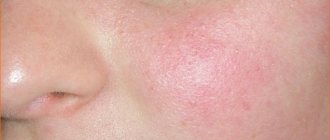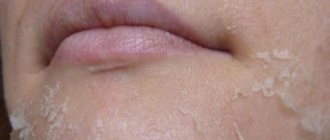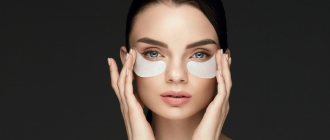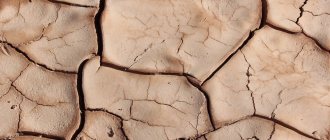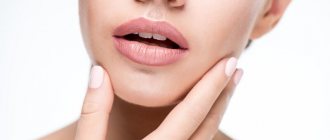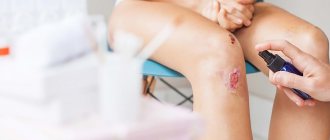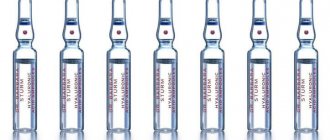Milia are small white or yellowish formations that are non-pathological in nature and do not pose a threat to human life or health. Eliminated with folk remedies (masks, scrubs, lotions), pharmaceutical preparations (salicylic, zinc ointments, vitamin solutions).
The most effective are considered to be laser removal and electrocoagulation - professional cosmetic procedures that are characterized by a short recovery period, absence of complications and painlessness.
Lifestyle correction (diet), the use of high-quality cosmetics and regular cleansing procedures (peelings) are measures to prevent the appearance of whiteheads.
Causes of milia
Based on the nature of its occurrence, education is divided into several categories:
- primary – the appearance of acne for any external reasons, due to the accumulation of sebum under the skin;
- secondary – appear due to damage to the surface structures of the skin, prolonged inflammatory processes, metabolic disorders with increased deposition of adipose tissue in all areas of the body.
Milia are formations similar to acne, only inside them it is not purulent exudate that accumulates, but fat or lard. They are not formed in the pore area, but under the skin, so they do not come into contact with the environment, as a result of which bacteria do not penetrate there, and inflammation does not form.
We recommend reading: Milia on the eyelid
There are the following reasons why this type of acne forms:
- excessively long exposure to the skin surface of sunlight;
- endocrine pathologies that cause hormonal imbalance;
- a diet high in fatty foods that spread throughout the body;
- heredity;
- insufficient intake of nutrients and vitamins in food, accompanied by hypovitaminosis or vitamin deficiency;
- impaired metabolism;
- bad habits (alcohol, smoking);
- the use of low-quality cosmetics accompanied by poor facial hygiene;
- liver pathologies accompanied by the deposition of adipose tissue;
- reduced functionality of the digestive tract.
Depending on the nature of the condition, the patient will need to see doctors of different specialties.
What factors cause cystic neoplasms?
Dermatologists identify some causes and factors that provoke the appearance of acne on the face:
- most importantly, poor skin care or its complete absence;
- excessive sebum secretion;
- long stay on the beach in direct sunlight;
- excessive passion for cosmetics, especially for foundations and powders, they clog the ducts of the sebaceous glands, thereby causing acne to appear on the face;
- severe dryness of the facial skin also provokes the appearance of cysts;
- frequent visits to the solarium;
- liver or gall bladder diseases;
- improper functioning of the gastrointestinal tract and pancreas;
- restructuring of the hormonal system during puberty;
- a large amount of fatty, fried, smoked, salty and sweet foods in the diet;
- the disease can be transmitted at the genetic level, in which case it cannot be avoided in any way;
- bad habits such as smoking and drinking alcohol.
If you don’t want such problems to appear on your face, study the main reasons for their appearance. And try to avoid them. If you still have bad habits, then it is better to get rid of them as quickly as possible and start leading a healthy lifestyle.
Milia removal
There are many methods that can be used to eliminate oily acne. The patient first undergoes a complete diagnosis to identify the root cause of the condition.
Mechanical removal
The procedure has contraindications, so the body’s condition is diagnosed before it. The method takes place in several stages:
- Cleansing skin surfaces. There are many microorganisms on human skin, which are also components of normal microflora. Regardless of this, bacteria can penetrate the wounds after the procedure, causing a purulent lesion.
- The doctor punctures the skin with a syringe and completely removes the contents.
- After removing the contents of each eel, treatment is carried out using an antiseptic.
Doctors do not recommend performing the procedure on their own, as the patient may damage nerves and blood vessels. It is also possible for infection to spread into deep tissues, which increases the risk of sepsis (bacterial blood infection) and purulent boils. The technique is performed by a specially trained cosmetologist.
Electrocoagulation
Before exposure to the device, antiseptic treatment of the skin is carried out. It prevents the spread of infection to damaged tissue. Electrocoagulation is the effect of low-frequency electrical discharges on the skin. The procedure is painless, the patient may only feel a slight tingling sensation. During the technique, the contents of the eel are destroyed.
After completing the technique, a small crust appears on the skin, and the patient feels dry. Such symptoms disappear 2-3 days after completion of the procedure. It is recommended to apply antiseptics and moisturizers daily after electrocoagulation.
Laser
This is the most modern way to remove fatty deposits. It has a minimum of side effects and contraindications. The drug practically does not damage the skin surfaces.
The doctor first disinfects the skin surfaces, and only then uses the laser. After its use, a small crust forms on the skin, which peels off on its own within a few days. After the procedure, it is also recommended to use a moisturizer to prevent excessive dryness of the skin.
Hardware cosmetology
There are several hardware methods to combat millet grass - which one will be preferred by the cosmetologist after reviewing the patient’s medical history.
The specialist must take into account:
- Number of milia;
- Damage area;
- Patient's health status;
- Presence/absence of contraindications.
How to get rid of milia on the face? Here is a list of popular procedures:
- Electrocoagulation. A popular way to combat milia. Instead of a laser beam, high frequency alternating current is used. The effectiveness of the method is confirmed by positive reviews from doctors and patients. After the procedure, the crust disappears quickly enough, there are no traces.
- Laser coagulation. This proven method is suitable for most patients with whiteheads on the face. Laser cauterization gives good results and is often used to get rid of grass. After treatment with a beam, the location of the milium becomes covered with a crust. After a couple of weeks, it disappears and the treated areas heal. At home, the patient should lubricate the crusts with disinfectant compounds.
- Corsetage. This method is considered outdated and is rarely used. After treatment, whiteheads are scraped out with a special device that resembles a spoon. The method is quite traumatic. After the session, scars remain on the skin that are difficult to treat.
The choice of method for treating milia should be made by a specialist, because the skin is a living organ that requires very careful and, preferably, professional treatment.
In addition, there are specific contraindications for the use of one or another method, such as increased fat content, dryness, the nature of the location of blood vessels, the identification of which is possible only after undergoing special studies.
How to remove milia at home
If the patient chooses home treatment, he should be aware that there is a possibility of side effects. The risk of purulent infection of the tissues surrounding milia increases. Doctors do not guarantee 100% removal of formations if a person chooses home treatment. Some milia may remain under the skin, causing the condition to recur.
There are several methods for removing oily acne at home:
- Baking soda. You must first make a soap solution, which can be obtained from children's bath foams. Such products have an almost neutral pH, so they do not dry or damage the skin. Baking soda is added there. The resulting mixture is rubbed into the places where the acne is located. After a few minutes it is washed off. It is important to know that irritation may occur after application of the product.
- Pumpkin with sour cream. The pumpkin should be grated on a fine grater to form a paste. It is mixed with a small amount of sour cream so that the mixture remains thick. The resulting product is applied to the skin, then washed off with water. Most often, skin irritation does not appear.
- Honey with yeast. You need to take fresh yeast and mix with honey. Add citric acid on top and mix thoroughly. After this, add 10 drops of hydrogen peroxide. The resulting mixture is infused for several hours. After this, apply to the face, after 5 minutes rinse with running warm water.
- Paraffin. Before using the product, you must cleanse your skin with tonic or lotion. Melt the paraffin mask until it becomes warm, but not hot. The resulting consistency is applied to the milia area; as soon as the mask has cooled, it is removed.
- Calendula. This plant causes a disinfecting effect. It is poured with a glass of hot water. Leave for 40-50 minutes until completely cooled. A cotton swab is soaked in the liquid and wiped over the face. After 30 minutes, you need to wash it off with running warm water. The same method is possible for chamomile, but it is necessary to alternate different herbs with each other.
- Kalina. It is necessary to take fresh berries, they should not be frozen. The juice is squeezed out of them and mixed with flour. You should get a paste that can be applied to your face, but it should not spread. The mask is kept on the face for 30 minutes, after which it is washed off with running warm water.
- Sea salt. You need to take 2 tablespoons of the product and add a small amount of cool water. You can't wait for the mixture to melt. The product is applied to the face as a peeling, rubbing the skin a little. After this, you need to wash off the solution. To avoid irritation, you can dissolve the salt in olive oil instead of water.
If the patient is allergic to any herbal remedies, it is recommended not to use calendula, chamomile, or berries, as a cross-reaction may develop. It manifests itself in rash, itching, inflammation, redness. If such a reaction occurs, you need to take an antihistamine and consult your doctor.
Summing up
It is definitely faster and safer to remove the grass with the hands of specialists. But it is very important to know why white bumps began to appear on the skin. Therefore, first try to eliminate all external provoking factors. If folk remedies are not effective, go to the doctor for diagnosis. After receiving the test results, he will tell you exactly what to do and which measures and medications will be useless.
In any case, it is necessary to remove the abundantly scattered grass on the face, otherwise, under certain conditions, a deep subcutaneous wen may form from a small pimple. And this is a much more serious problem.
I invite you to share your experiences and reviews about cosmetic procedures and folk remedies in the comments to this article. Your opinion may also be useful to other readers of the site.
Milia in children
Infants under 1 month of age may develop small rashes on the face. If they are located only on the head area and not lower, there is no need to worry. This condition will go away later on its own. It is prohibited to squeeze out such formations; this will cause many side effects; other acne may appear on the baby’s face.
Milia can form after 1 month. But you can't do anything with them. Subsequently, such formations will disappear if the child does not develop metabolic disorders.
Milia often occur in children during adolescence. This is the result of hormonal changes. It is recommended to consult a cosmetologist. He can perform laser removal. It is not recommended to extract the formations on your own. In adolescents, the condition resolves after hormonal levels normalize.
We recommend reading: Millet under the eyes
Prevention measures
The preventive measures listed below not only help reduce the number of milia, but also have the most beneficial effect on the entire body. Therefore, it’s worth trying to listen to the advice of experts and reconsider some of your habits:
- Proper nutrition. Remove fatty, fried, too spicy and salty, fast food and processed foods from your diet. Enrich it with seafood, lean meats and fish, fresh fruits and vegetables, herbs, seeds and nuts.
- Regular cleansing. At least once every 7-10 days you need to use peelings or scrubs. You can buy them or use them prepared according to folk recipes: soda, salt, coffee. 2-3 times a year, if the skin is excessively greasy, it is advisable to perform professional cleaning - manual or machine.
- Masks. For oily and combination skin, masks with fat-absorbing ingredients are a necessary part of care. These can be products with cosmetic clay, rice or oatmeal, or activated carbon. Preparations with salicylic, lactic, and glycolic acid help reduce sebum secretion.
- Cosmetics. It must be of high quality, if possible - with a predominance of natural or modern high-tech components. You need to choose it based solely on the type and condition of your own skin, and not on advertising promises. You should try to apply decorative paint less often and remove it immediately after returning home.
- Chronic diseases . Requires constant monitoring by a specialist. It is very important to take measures to prevent their aggravation. If, for health reasons, correction of hormonal levels is necessary, you should take medications only in strict accordance with medical prescriptions. The same applies to oral contraceptives.
- Bad habits. Smoking and alcohol poison the body, reduce immunity and contribute to rapid contamination of pores. If it is not possible to completely abandon them, try to at least reduce the amount consumed as much as possible.
- Physical exercise. If they are moderate, they are very useful for strengthening the immune system and helping to eliminate toxins. But the sebaceous glands work more actively during sports, so after training, the face and body must be cleansed of released fat and sweat.
We must not forget about protecting the skin from the negative effects of ultraviolet radiation. But keep in mind that creams with physical filters (zinc or titanium dioxide) are quite dense and can clog pores, causing the formation of milia.
Varieties of millet on the face
There are several common types of milia on the skin of the face:
- Primary. They appear on the surface of the epidermis spontaneously and under the influence of specific factors. Sometimes girls do not properly care for their face or expose their skin to harmful ultraviolet rays.
- Secondary or clinical manifestations. After an injury, scars appear, in which millet often forms.
Milia most often occurs in women who regularly use makeup and do not carefully remove it from their facial skin.
